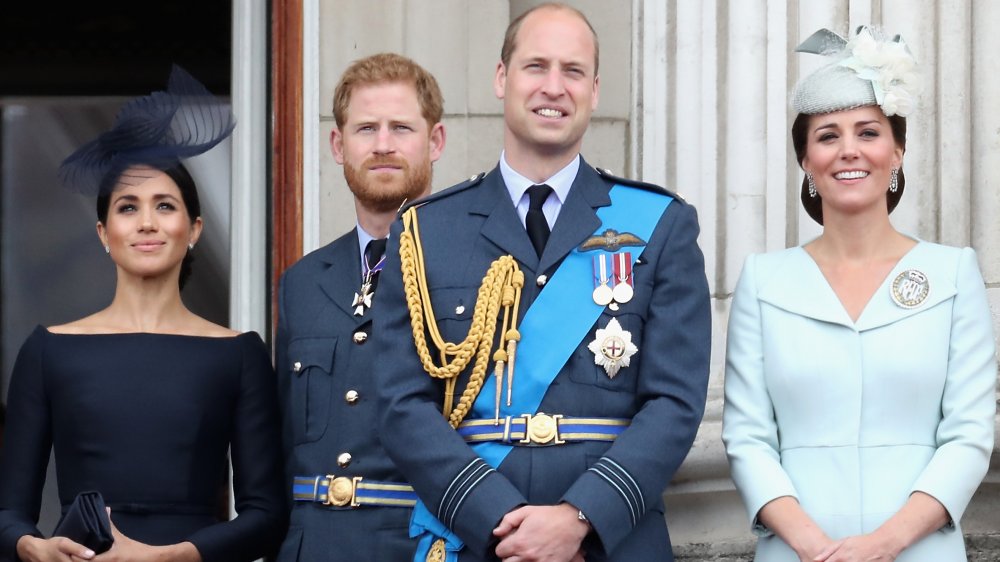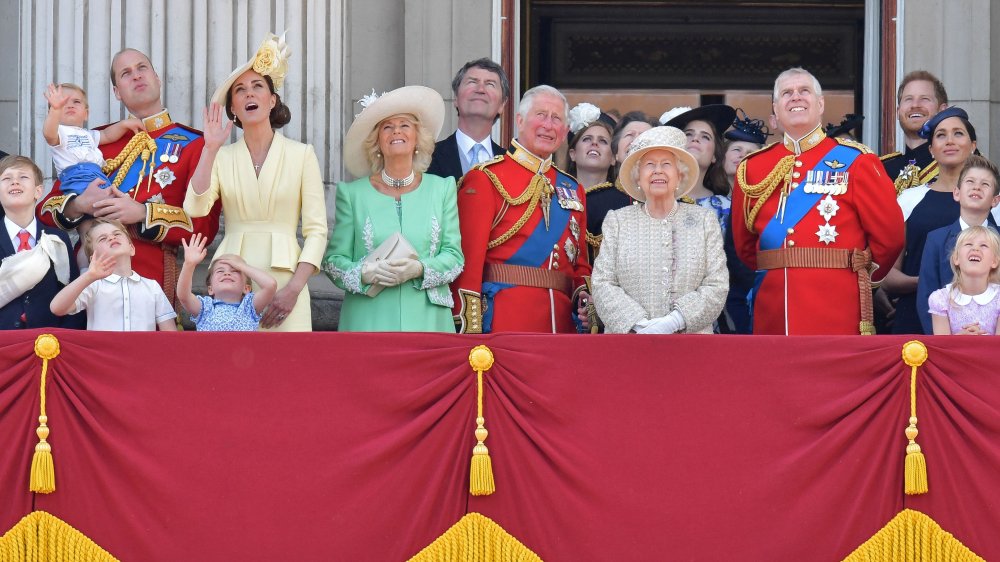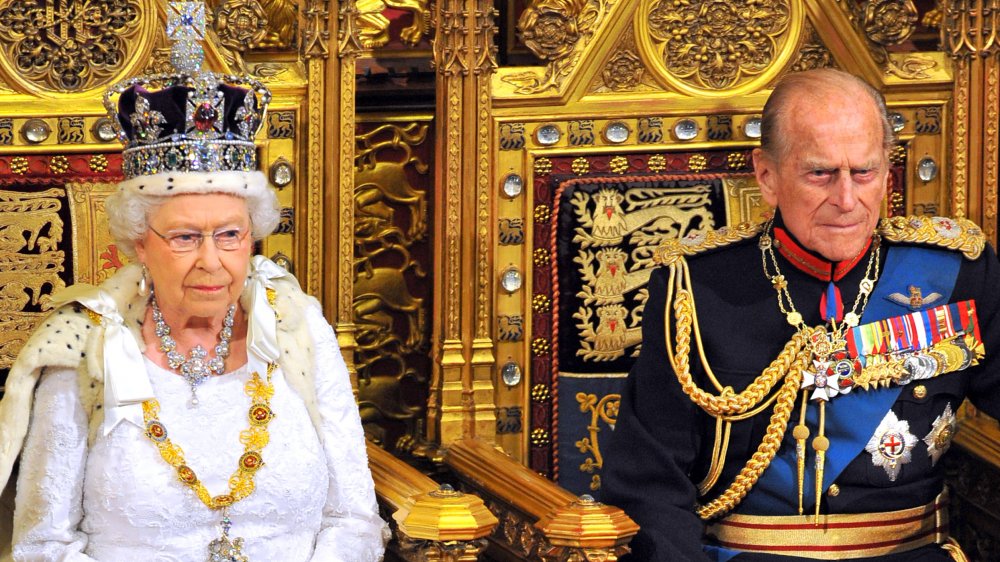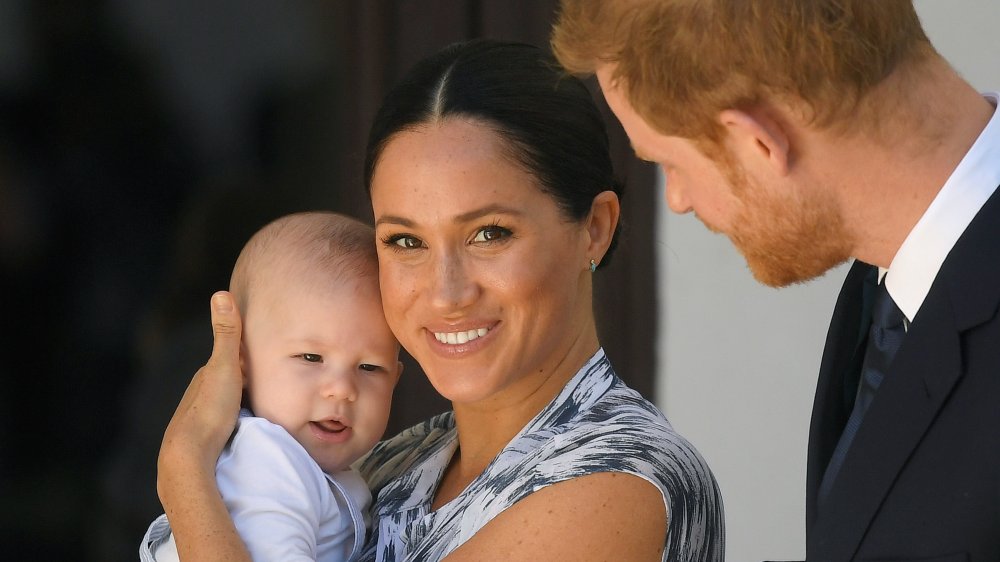Why You Never Hear The Royal Family Called By Their Last Name
Prince Harry. Prince William. Queen Elizabeth. Those are all household names, but there's one thing missing from them: a last name. Members of the British royal family tend to be known by their first names and royal titles only, leaving many people confused over whether the royal family even has a last name. Per the royal family's official website, "People often ask whether members of the Royal Family have a surname, and, if so, what it is."
The short answer is: Yes, the royal family does have a surname. It's Mountbatten-Windsor. However, that name hasn't always been around. And even though the royal family does have a surname these days, it's only used in certain circumstances. That's why, when it comes to the reason you never hear the Royal Family called by their last name, the long answer is a little complicated.
Let's take a look into the royal family's history to explain how the royals got their last name and why they rarely use it.
The royal family didn't use to have surnames
Members of the royal family are traditionally called by their first names or their royal titles. For example, Prince William's royal title is the Duke of Cambridge. Women who marry into the royal family may be known either by their maiden names or by their own royal titles — so William's wife is either Kate Middleton or the Duchess of Cambridge.
One reason for this practice is that the royals don't really need a last name to be recognizable. They're famous enough that the public knows them on a first-name basis. Until the 20th century, the royal family didn't have a surname at all. "Kings and princes were historically known by the names of the countries over which they and their families ruled," the royal website explains.
The royal family did, however, have "house" or "dynasty" names, which changed when a new faction of the family took over the line of succession. The House of York and the House of Tudor are two historical examples of royal houses.
The royal family adopted a surname in 1917
In 1917, King George V adopted a new house name, Windsor, after a famous royal castle. For the first time, he also declared that name to be the surname of the royal family.
In 1960, after Queen Elizabeth took the throne, she decided to claim the royal surname Mountbatten-Windsor for her own line of direct descendants. The name is a combination of the Queen's last name, Windsor, with the adopted surname of her husband Prince Philip, Mountbatten. That's where the royal family's current surname comes from.
That being said, the surname Mountbatten-Windsor is only used in specific cases. Princes and princesses generally don't need a last name, so they don't use it. Even lower-ranking royals don't need a surname, as long as they have a royal title to use instead. But on the occasion that they did need to use a last name, any descendants of the Queen would use Mountbatten-Windsor.
Per the royal family's website: "It was therefore declared in the Privy Council that The Queen's descendants, other than those with the style of Royal Highness and the title of Prince/Princess, or female descendants who marry, would carry the name of Mountbatten-Windsor."
Royals can use Mountbatten-Windsor or another last name
So, who does use the royal surname regularly? Royals who don't have a title or another last name. Prince Harry and Meghan Markle, for example, named their son Archie Mountbatten-Windsor. Archie has no royal title, Time reports.
But using this surname isn't a strict royal rule, and sometimes people choose to use a different one. Prince William, for example, used a different naming practice for his children, who are all princes and princesses. His children don't have a legal surname at all, but they do need to use a last name at school. Instead of Mountbatten-Windsor, they use the name of their father's royal title. Prince William is the Duke of Cambridge, so his kids use the last name Cambridge.
Also, if a royal woman marries a non-royal, she'll take his last name and so will her children, as per the Queen's decree. Lastly, members of the royal family who aren't descendants of Queen Elizabeth still use the surname Windsor, as decreed by King George V in 1917.




